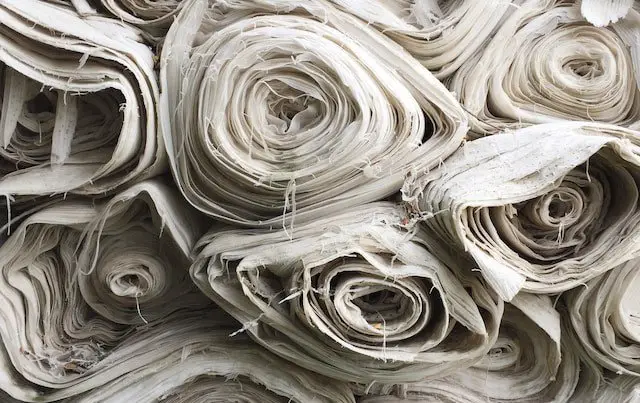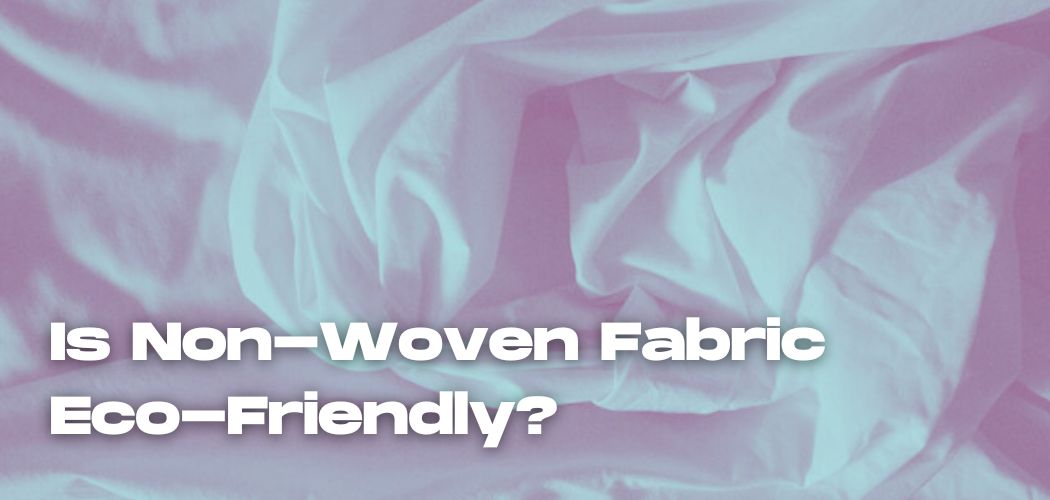Non-woven fabric is a recyclable material that is made from synthetic fibers. It is often used in place of traditional fabrics, such as cotton and wool because it is more environmentally friendly.
Non-woven fabric can be recycled and reused, which makes it a popular choice for many consumers. However, there are also some drawbacks to using this material.
In this blog post, we will explore the pros and cons of nonwoven fabric and help you decide if it is the right choice for you!
What is Non-Woven Fabric?
Non-woven fabric is a fabric-like material made from staple fibers or long filaments bonded together by chemical, mechanical, heat, or solvent treatment.

The term is used in the textile manufacturing industry to denote fabrics, such as felt, which are neither woven nor knitted.
Non-woven materials typically lack strength unless densified or reinforced by a backing.
Non-woven fabrics are usually produced by a wet-laid process, where the fibers are suspended in a liquid and then set to dry.
The water used in the manufacturing process can be recycled.
Is the Production Process of Non-Woven Fabrics Environmentally Friendly?
The manufacturing process of non-woven fabrics is not as environmentally friendly as the production process of woven fabrics.
Non-woven fabrics are made from synthetic materials, which can be harmful to the environment if not disposed of properly.
However, in some cases, the non-woven fabric can be made from recycled materials, which reduces its environmental impact.
Are Non-Woven Fabrics Recyclable?
Yes, non-woven fabrics are recyclable.
They can be recycled into new products such as insulation, automotive parts, and building materials.
This makes them a more sustainable option than some other types of fabric.
Are There Any Environmental Downsides to Using Non-Woven Fabric?
The main environmental downside to using non-woven fabric is that it is not as durable as other fabrics. This means that it will need to be replaced more often, which can create waste.
Additionally, non-woven fabric is usually made from synthetic materials, which can release harmful chemicals into the environment when they break down.

On the other hand, non-woven fabric is recyclable, so it can be reused or repurposed instead of being sent to a landfill.
Additionally, some types of non-woven fabric are made from natural materials like bamboo or wool, which are biodegradable and environmentally friendly.
Ultimately, the decision of whether or not to use non-woven fabric depends on your specific needs and preferences.
If you are looking for durable fabric, it may not be the best choice. However, if you are interested in an eco-friendly option, the non-woven fabric may be a good option for you.
Are Non-Woven Bags Environmentally Friendly?
Non-woven bags are made from recycled materials, which means they have a reduced environmental impact.
They are also reusable and recyclable, so you can feel good about using them over and over again.

The best part is that non-woven bags are biodegradable, so they can be composted without releasing any harmful toxins into the environment. They also require less energy and resources to produce than other types of bags.
When it comes to environmental friendliness, non-woven bags are hard to beat!
How Can We Use Non-Woven Fabric More Sustainably?
If you are interested in using non-woven fabric more sustainably, there are a few things you can do.
First, make sure to recycle your non-woven fabric when you’re done with it. You can also look for products made from recycled or sustainable materials.
Secondly, try to avoid buying disposable items made from non-woven fabric, as these will eventually end up in landfills.
Finally, look for ways to reduce your overall consumption of fabric. Try using less-durable fabrics for everyday items, or go for a natural fiber like cotton or linen instead of synthetic materials.
Nonwovens are the perfect choice when you need an eco-friendly and affordable option!





